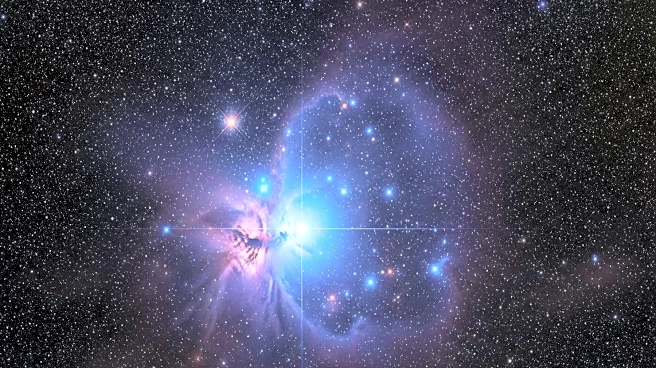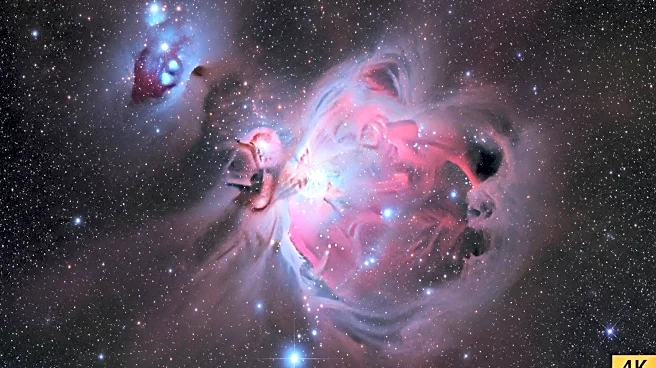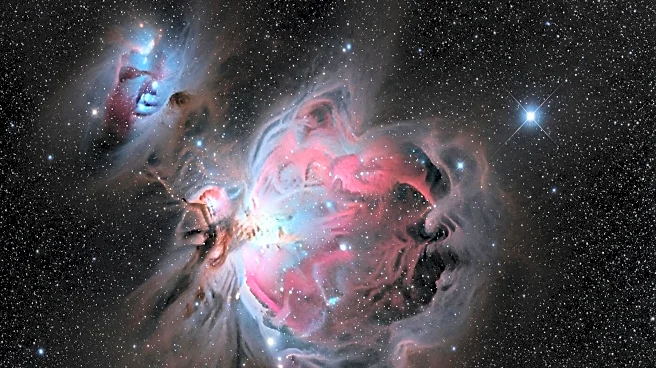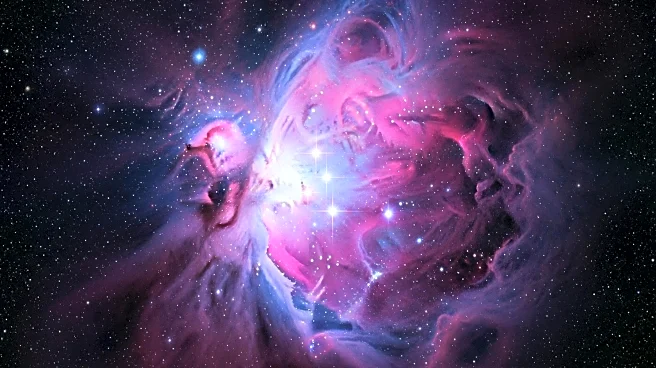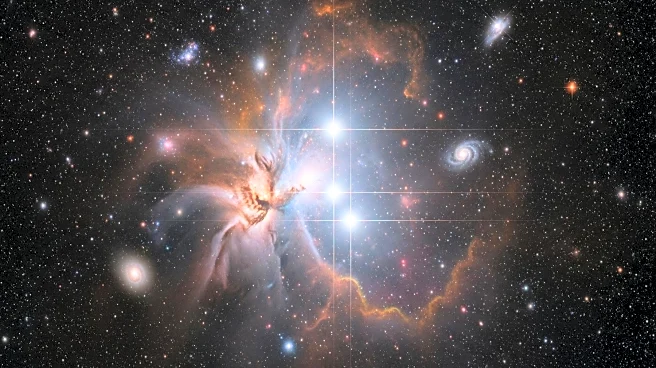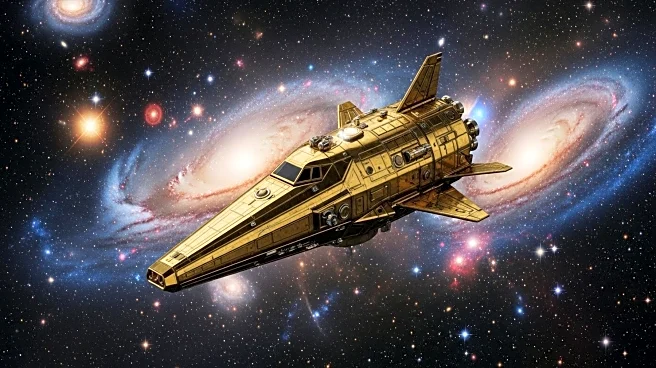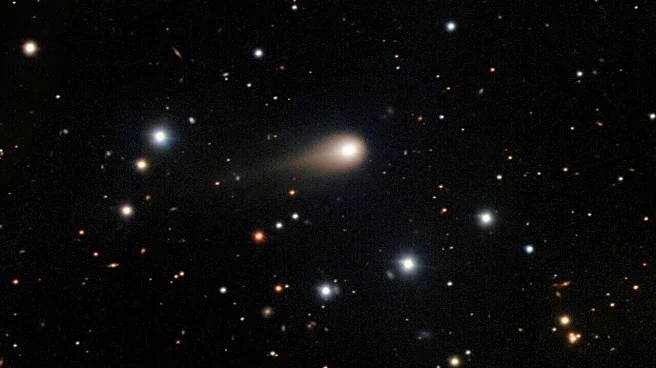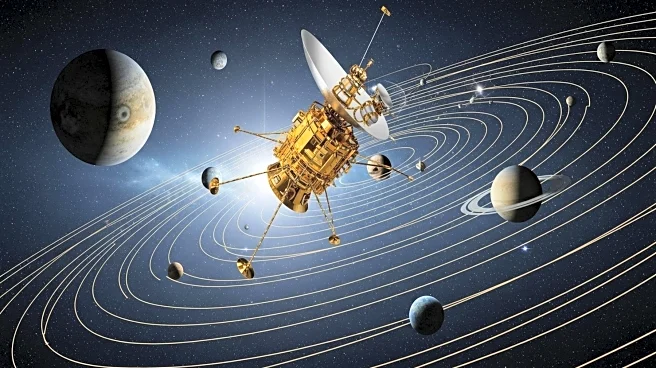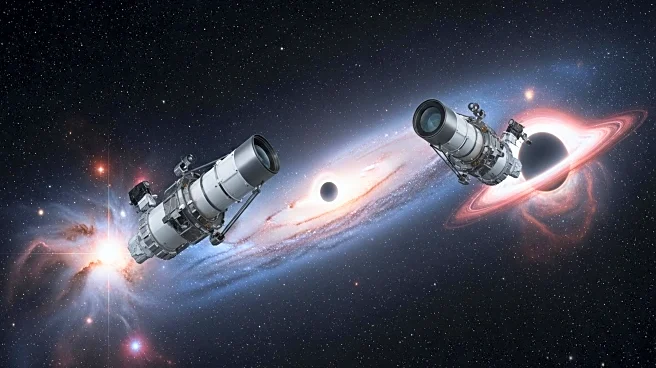What's Happening?
NASA's Webb Space Telescope has released a new image showcasing thousands of newborn stars in the star cluster Pismis 24, located 5,500 light-years away in the constellation Scorpius. The image reveals a dramatic cloud of star-forming dust and gas, known as the Lobster Nebula, which is so massive that it extends beyond the camera's view. The Webb Telescope, launched in 2021, is the largest and most powerful telescope ever sent into space, capable of viewing the universe in infrared light. This particular image took over five hours to capture, highlighting the telescope's ability to provide detailed views of cosmic phenomena.
Why It's Important?
The image of Pismis 24 offers a glimpse into the processes of star formation, providing scientists with crucial data to understand how stars are born and evolve. The Webb Telescope's ability to capture such detailed images in infrared light allows researchers to study regions of space that are otherwise invisible to optical telescopes. This contributes to our understanding of the universe's structure and the lifecycle of stars, potentially leading to new discoveries in astrophysics.
What's Next?
Continued observations by the Webb Telescope may uncover more about the Lobster Nebula and other star-forming regions, enhancing our knowledge of stellar evolution. Scientists will likely use the telescope to explore additional cosmic phenomena, further expanding our understanding of the universe.
